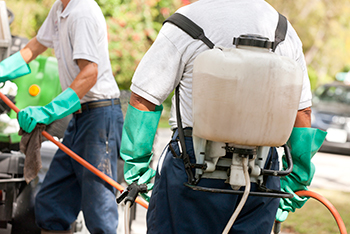 June 12, 2014 – A homeowner who hired an independent contractor to spray potent herbicides that kill unwanted trees and plants may be liable for the tree damage caused to neighboring properties, under a recent decision by the Wisconsin Supreme Court.
June 12, 2014 – A homeowner who hired an independent contractor to spray potent herbicides that kill unwanted trees and plants may be liable for the tree damage caused to neighboring properties, under a recent decision by the Wisconsin Supreme Court.
Normally, employers are immune from liability for the negligent acts of independent contractors. However, exceptions apply. The employer could be liable for the independent contractors’ torts if the activity is “inherently dangerous,” because the employer knew or should have known that extra precautions were necessary.
Robert Luethi hired Briarwood Forestry Services LLC to apply an herbicidal spray that would kill a plant called “prickly ash” on his property. Apparently, Briarwood’s workers over-sprayed the herbicide and the mist drifted onto neighboring properties.
Neighbor Bruce Brandenberg alleged permanent damage to eight trees. Neighbor Kelli Brandenberg alleged that negligent spraying killed 71 of the 115 trees on her property. Together, they sued Briarwood Forestry Services, Luethi, and their insurers.
Luethi argued that he could not be liable for the negligence of Briarwood Forestry as an independent contractor. He argued that the “inherently dangerous exception” should be abandoned in Wisconsin, if not completely then as it relates to homeowners.
But in Brandenburg v. Briarwood Forestry Services LLC, 2014 WI 37 (2014 WI 37) the supreme court affirmed the longstanding acceptance of the “inherently dangerous exception” in Wisconsin negligence law and ruled that spraying herbicides in this case was an inherently dangerous activity that does not shield Luethi from liability.
“[U]nder these circumstances, ‘spraying the herbicides was an inherently dangerous activity, and, as a result, the general rule of nonliability for an independent contractor’s torts did not apply,’” wrote Justice Patrick Crooks, quoting the lower court of appeals.
The court noted that Briarwood Forestry Services used a potent herbicide that was capable of killing trees, including oak, birch, poplar, maple and 52 other species.
An investigation and lab analysis by the Wisconsin Department of Agriculture, Transportation & Consumer Protection determined that the active ingredients used in the specific herbicides Briarwood used caused the damage to the Brandenburg trees.
The facts are not disputed. The only question on review to the supreme court was whether Luethi could be held liable for the negligent acts of Briarwood Forestry. Thus, the case turned on whether spraying the herbicides was “inherently dangerous.”
The supreme court ruled that it was, as a matter of law: “[U]nder our precedent, the activity is inherently dangerous, because the activity poses a naturally expected risk of harm, and taking certain precautions could reduce the risk to a reasonable level,” Crooks wrote.
The majority rejected Luethi’s argument that he could not be held liable because he had no knowledge of the risks involved or the precautions that were necessary.
The majority said Luethi could be liable if he should have recognized the risks posed by spraying and did not meet an ordinary duty of care to mitigate those risks.
On remand, the majority directed the circuit court to determine whether Luethi failed to use ordinary care to mitigate the inherent danger that he should have known about, and whether the harm that occurred was actually caused by Briarwood’s herbicide spraying.
Dissent/Concurrence
Chief Justice Shirley Abrahamson (joined by Justices Ann Walsh Bradley and David Prosser) concurred in part and dissented in part. The trio agreed that the case should be remanded to determine whether Briarwood’s spraying caused the damage.
However, they dissented to argue that it isn’t necessary, on remand, to determine whether Luethi used ordinary care in trying to take precautions to mitigate a known danger, because the court already ruled the activity was inherently dangerous.
That is, in cases involving the inherently dangerous activities of independent contractors, “the liability of an employer of an independent contractor depends on the tortious acts of the independent contractor, not the tortious act of the employer.”
“Once the court has determined as a matter of law that the activity is ‘inherently dangerous,’ that is, that the activity poses a naturally expected risk of harm, the court has determined that a reasonable person is in the position of Luethi knew or had reason to know the activity was inherently dangerous,” the chief justice wrote. “The end!”
